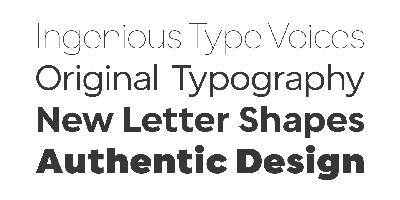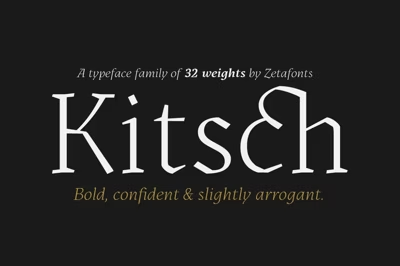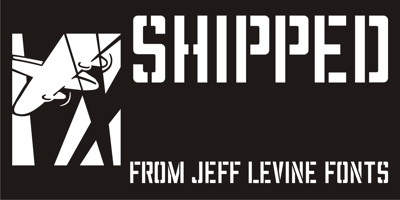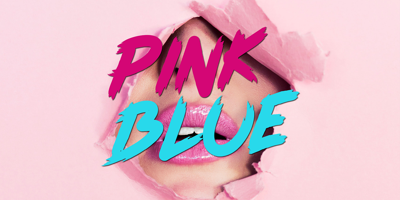Font Licensing: Everything You Need to Know
Font Licensing: Everything You Need to Know
Font licensing is one of the most misunderstood aspects of design. Many people assume that downloading a font means they can use it however they want. Unfortunately, that's not how it works. Understanding font licenses protects you legally and supports the type designers who create these valuable tools.
Why Font Licensing Matters
Fonts are software. Just like you can't use Microsoft Office without a license, you can't use fonts without proper authorization. Type designers spend months or years creating fonts, and licensing ensures they're compensated for their work.
Using fonts without proper licensing can result in cease-and-desist letters, lawsuits, and significant fines. It's not worth the risk.
Types of Font Licenses
Desktop License
This is the most basic license type. It allows you to install fonts on a specific number of computers and use them in documents, presentations, and print materials.
What you can do: Create PDFs, print materials, static images What you can't do: Embed fonts in websites, apps, or distribute to clients
Desktop licenses are usually sold per number of users or computers. A 5-user license means five people in your organization can install and use the font.
Web Font License
Web font licenses permit embedding fonts into websites using @font-face CSS. These licenses are typically based on monthly page views or number of domains.
What you can do: Embed fonts on websites, web applications What you can't do: Use in mobile apps, redistribute font files
Some web font licenses have tiered pricing: 10,000 monthly views might cost $10, while 1 million views could cost $100+. Always check if your traffic exceeds your licensed tier.
App License
App licenses allow embedding fonts in mobile or desktop applications. These are separate from web licenses and typically cost more due to distribution concerns.
What you can do: Embed in iOS, Android, or desktop apps What you can't do: Allow end-users to extract or use fonts separately
App licenses often cost per application or per number of app installations.
eBook License
For embedding fonts in ePub, Kindle, or other eBook formats. Many font licenses specifically exclude eBook use unless you purchase this additional license.
What you can do: Embed in digital publications and eBooks What you can't do: Allow readers to extract and use the font
Broadcast and Video License
Required for using fonts in videos, films, commercials, or broadcast media. This includes YouTube videos, TV commercials, and streaming content.
What you can do: Use in video titles, motion graphics, film credits What you can't do: Distribute editable files with fonts to viewers
Server License
Needed when fonts are installed on servers for dynamic document generation, such as automatically creating PDFs or images with custom typography.
Understanding License Terms
Number of Users/Seats
Desktop licenses specify how many people can install the font. A 3-seat license means three people total, not three at a time. If a fourth person needs access, you need to upgrade.
Page Views
Web font licenses track monthly unique page views. Using a font licensed for 10,000 views on a site getting 50,000 views violates the license. Monitor your traffic and upgrade when necessary.
Geographic Restrictions
Some licenses restrict use to specific countries or regions. An "Americas" license won't cover European websites.
Modifications
Most licenses prohibit modifying font files. You can't edit letterforms, add characters, or convert formats without permission. Some licenses allow modifications but require sharing changes with the foundry.
Redistribution
Unless specifically permitted, you cannot give or sell fonts to clients, contractors, or anyone else. Each person needs their own license.
Free and Open Source Fonts
Google Fonts and Similar Services
Google Fonts uses the SIL Open Font License, which is very permissive. You can use these fonts commercially, modify them, and redistribute them freely. The main restriction is you cannot sell the fonts themselves.
Creative Commons Licenses
Some fonts use Creative Commons licensing. Read the specific terms—some require attribution, others prohibit commercial use. "CC BY" means attribution required; "CC BY-NC" means non-commercial only.
Public Domain
Fonts in the public domain have no restrictions. However, be cautious—just because a website offers a font for free doesn't mean it's public domain. Verify the actual license.
What Happens When You Violate Licenses?
Cease and Desist Letters
Font foundries actively monitor font usage. They may send letters demanding you stop using unlicensed fonts and purchase proper licenses.
Financial Penalties
Lawsuits can result in paying for the proper license retroactively, plus penalties and legal fees. Some settlements reach tens of thousands of dollars.
Reputation Damage
Being publicly called out for font piracy damages professional reputation. It's simply not worth the risk.
How to Stay Compliant
Read the EULA
Every font comes with an End User License Agreement. Actually read it. The EULA specifies exactly what you can and cannot do.
Keep Purchase Records
Maintain documentation of all font purchases and licenses. If questioned, you'll need proof of legitimate licensing.
Audit Your Fonts
Regularly check which fonts you're using and verify you have proper licenses for each use case. That desktop font you bought years ago might not cover web use.
When in Doubt, Ask
If you're unsure whether your use case is covered, contact the font foundry. Most are helpful and want to ensure proper licensing rather than pursue legal action.
Use License Management Tools
Services like Fontstand, Adobe Fonts, or Monotype Fonts offer subscription models that simplify licensing across multiple use cases.
Practical Tips
For Agencies: Get client contracts that clarify who purchases font licenses. Don't assume licenses transfer with project files.
For Freelancers: Budget for proper font licensing in your quotes. It's a legitimate business expense.
For Businesses: Implement systems to track font usage across teams and ensure compliance as your organization grows.
Final Thoughts
Font licensing might seem tedious, but it's essential for legal protection and ethical design practice. Type designers deserve compensation for their craft, and proper licensing ensures they can continue creating the fonts we all rely on.
When in doubt, choose properly licensed fonts—whether purchased or open source. The small investment in correct licensing far outweighs the risk of legal complications, and you'll sleep better knowing you're operating ethically and legally.





